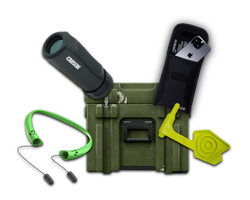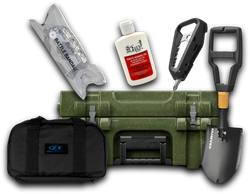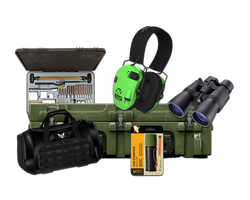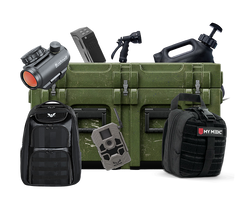How to Keep Snakes Out of Your Sleeping Bag: Essential Tips for Outdoor Safety
Table of Contents
- Introduction
- Understanding Snake Behavior
- Preparation: Essential Gear and Practices
- Camping Techniques to Avoid Snake Encounters
- How to Handle a Snake Encounter
- Conclusion
- FAQ
Introduction
Imagine waking up during a camping trip to find a snake nestled in your sleeping bag. While this scenario may seem like a scene straight out of a horror movie, it’s a genuine concern for many outdoor enthusiasts. Snakes, being cold-blooded creatures, are drawn to warmth, and a sleeping bag can certainly provide an inviting environment. Understanding how to keep snakes out of your sleeping bag is crucial for ensuring a safe and enjoyable camping experience.
The fear of snakes is not unfounded; snakes are known to inhabit various terrains, especially in warm climates or areas near water. Each year, there are numerous encounters between humans and snakes, leading to injuries that could have been avoided with proper precautions. This blog post aims to equip you with the knowledge and tools necessary to prevent snake encounters while camping, particularly in vulnerable sleeping situations.
By the end of this article, you will learn effective strategies to keep snakes at bay, understand snake behavior, and equip yourself with the right tools and techniques to maintain a safe sleeping environment during your outdoor adventures. Whether you’re a seasoned camper or a novice looking for tips, this guide will be invaluable for your next trip into the wild.
Understanding Snake Behavior
To effectively keep snakes away, it’s essential to understand their behavior and habitat preferences. Snakes are primarily attracted to areas where they can find food and warmth. They are most active during warmer months and often seek shelter in tall grass, underbrush, and even near human campsites, especially if food scraps are present.
Why Snakes Choose Warmth
As cold-blooded reptiles, snakes rely on external heat sources to regulate their body temperature. This means they often seek out warm places, especially during cooler nights. A sleeping bag, due to its warmth and insulation, can become an attractive resting spot for a snake if it’s not properly secured.
Common Snake Species in Camping Areas
When camping, especially in regions known for snake activity, it’s beneficial to be aware of the types of snakes you might encounter:
- Rattlesnakes: Often found in dry, rocky areas, they are known for their distinctive rattle and can be quite aggressive if threatened.
- Copperheads: Typically found in wooded or rocky areas, they have a camouflaging color pattern that blends well with their environment.
- Garter Snakes: Generally non-venomous and quite common in many areas, they are often seen around water sources.
- Water Moccasins (Cottonmouths): Found near water, they can be aggressive and are known for their potent venom.
Understanding the species in your area will help you take specific precautions and be more aware of your surroundings.
Preparation: Essential Gear and Practices
To effectively keep snakes out of your sleeping bag, preparation is key. Below are the essential gear and practices you should consider:
1. Invest in Quality Sleeping Gear
Using a high-quality sleeping bag is the first line of defense. Look for sleeping bags with features that minimize openings or potential entry points. Consider using a sleeping bag liner, which adds an extra layer of protection and is easier to clean if disturbed.
2. Use a Tent or Tarp
Whenever possible, set up your sleeping area inside a tent or under a tarp. This will not only shield you from the elements but also create a barrier between you and any potential snake encounters. If you prefer sleeping under the stars (cowboy camping), make sure to choose your location wisely.
3. Create a Clean Campsite
Snakes are attracted to food sources. Ensure you keep your campsite clean by:
- Storing food in airtight containers or bear-proof containers.
- Disposing of waste properly.
- Keeping cooking areas separate from sleeping areas.
By eliminating food sources, you reduce the likelihood of attracting snakes to your campsite.
4. Set Up a Barrier
While the idea of using a rope or cord around your sleeping area is often mentioned, its effectiveness is debated. Many campers swear by it, citing that snakes are less likely to cross rough terrain. However, it’s more effective to use physical barriers like tents or bivy sacks that can fully enclose your sleeping area.
5. Check Your Gear
Before settling into your sleeping bag, always check your gear. Shake out your sleeping bag and other items before use to ensure no critters have crawled in.
Camping Techniques to Avoid Snake Encounters
In addition to the right gear, employing specific camping techniques can significantly reduce the risk of snake encounters.
1. Choose Your Campsite Wisely
Selecting the right campsite is crucial for avoiding snake encounters:
- Avoid Dense Vegetation: Set up your camp away from tall grass, dense underbrush, and rocky areas where snakes may hide.
- Stay Away from Water Sources: Snakes are often found near water for hunting. Camp at least 100 feet away from lakes or rivers.
2. Elevate Your Sleeping Area
Consider using a cot or hammock to elevate your sleeping area off the ground. This not only provides comfort but also creates a barrier between you and any snakes on the ground.
3. Make Noise
Snakes can sense vibrations in the ground. Making noise while setting up camp can alert any nearby snakes to your presence, prompting them to move away. Bang sticks on the ground or walk around your campsite before settling in for the night.
How to Handle a Snake Encounter
Despite your best efforts, encounters can still happen. Here’s how to handle a snake encounter safely:
1. Stay Calm
If you encounter a snake, the first step is to remain calm. Most snakes will avoid humans if given the chance.
2. Slowly Back Away
If a snake is near your sleeping bag or campsite, back away slowly. Do not make sudden movements, as this can startle the snake and provoke a defensive response.
3. Alert Others
If you’re camping in a group, inform others of the snake’s presence so they can take appropriate precautions.
4. Seek Help if Necessary
If you’re unsure about handling the situation or if the snake is venomous, seek help from experienced campers or wildlife officials.
Conclusion
Staying safe while camping requires a combination of preparation, awareness, and proper techniques to keep snakes out of your sleeping bag. By understanding snake behavior and the environment, investing in quality gear, and employing effective camping practices, you can significantly reduce your risk of encountering snakes.
Camping should be an enjoyable experience, filled with adventure and connection with nature. With the right knowledge and precautions, you can sleep peacefully, knowing you're well-prepared for whatever the outdoors may bring.
For those looking to enhance their outdoor adventures, consider checking out Crate Club’s subscription services for high-quality tactical gear and survival tools that can enhance your camping experience.
Explore Crate Club's offerings to stay prepared and safe on your next outdoor excursion.
FAQ
1. Can snakes really crawl into a sleeping bag?
While it's rare, snakes may crawl into sleeping bags if they are unzipped and the snake is seeking warmth. Proper precautions can mitigate this risk.
2. What should I do if I find a snake in my sleeping bag?
Remain calm, back away slowly, and allow the snake to exit on its own. Avoid sudden movements that could startle the snake.
3. Are certain types of snakes more likely to enter campsites?
Yes, species like rattlesnakes and copperheads may be more prevalent in areas where their food sources are abundant, particularly near water or rodent populations.
4. What are the best sleeping arrangements to avoid snake encounters?
Using a tent or hammock can provide a barrier against snakes. Sleeping elevated off the ground is also advisable.
5. How can I tell if a snake is venomous?
Identifying venomous snakes often depends on their coloration and markings. Research local species before your trip or consult a field guide.
Share this article



